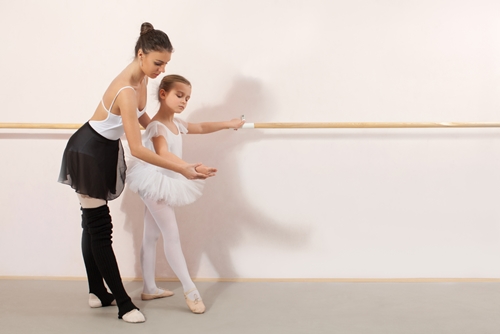When beginning any new job, you’re bound to make a few mistakes. The same goes for new dance teachers. Even after years of dance practices, routines and recitals, being a teacher for other dancers isn’t easy, and it can definitely difficult at the beginning. If you’re a new dance teacher, you want to make the best impression possible for your new dance studio teacher and your students. While some mistakes are unavoidable, others can be easily stepped past. Here are some tips for dance teacher training and the lessons to be learned from your students!
1. Juggling Too Many Things at Once
When you first become a dance teacher, you may bite off more than you can chew, Discount Dance noted. In some instances, you want to impress your boss so you take on more classes than you can handle, leaving you tired, weary and mistake-prone. It’s important to realize that you can only volunteer for as many classes as you can realistically take on.
It may be smarter to only begin with one or two classes and then add on a few more as you get the hang of things. In other instances, you might be the studio owner and the dance teacher. You may also be the receptionist and the studio cleaner. Taking on too many roles can leave you overwhelmed and cause your business to crumble before it even gets off the ground. If you just opened a dance studio, look into hiring dance students from local colleges as teachers.
2. Short Attention Spans
Sure, there is a lot more to being a dance teacher than just dancing. Any talented dance teacher will tell you that you have to have a passion for teaching at heart. However, though you might have had lectures in school, it’s important to not bring those to dance classes.
Whether you’re teaching young students or an older, advanced class, all students will become bored if they’re listening to a teacher ramble on. After awhile, they might even stop listening, Adventure and Me stated. Though you want to impress your dance students and let them get to know you, talking too much isn’t the right move. Instead, let them get to know you through your dance style and instruction!
3. Different Tones for Different Students
When many dance teachers begin their careers, it can be hard to differentiate the dance levels of students. You may be asked to take on a beginner’s class for adults and an advanced class for children, and it can lead you to potentially talk down to a student. After taking years of dance courses yourself, you may have a hard time understanding what different levels need and what they already know.
From teaching an advanced dancer a commonly known move or expecting a beginner to pick up a routine with very little flaws, these actions can be discouraging for dancers and potentially cause them to leave the class. Every good dance teacher supports her students and knows their exact skill levels, so they never feel out of their league or underwhelmed, Dance Advantage stated.
4. Students Need Repetition
As a dance student, you may have been a skilled learner and had the ability to pick up routines very quickly. Without issue you could get the basic moves down and quickly execute them with precision and grace. As a result, that may be the only style of teaching you’re familiar with.
Some dance teachers tend to rush through a routine with dancers, causing them to be confused and unorganized. As a teacher, it’s important to realize that your dancers aren’t familiar with your style – and pace – of dancing. When going through a routine for the first time, take it slow – your dancers will appreciate it!


